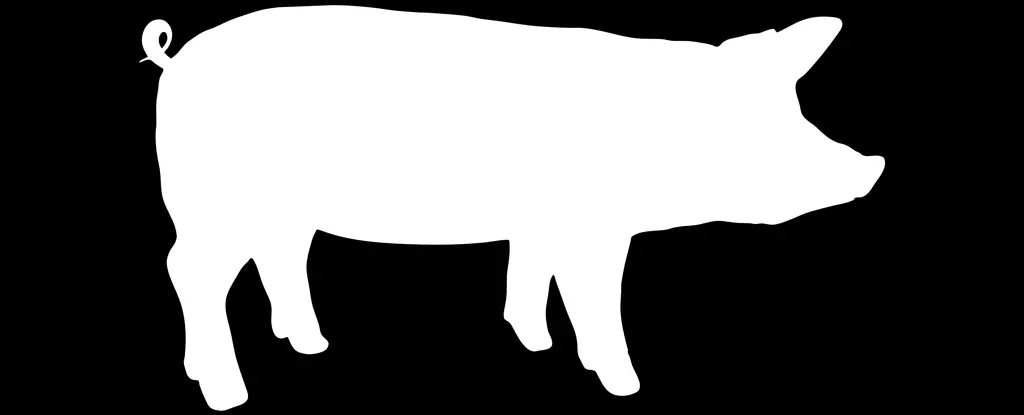As recent reports indicate, a case of avian influenza (bird flu) has emerged in a pig on a backyard farm in Oregon, highlighting the urgent need for vigilance in monitoring infectious diseases affecting both animals and humans. This incident not only raises concerns about the virus’s potential to jump species, but it also signals a shift in the dynamics of how we understand and manage influenza outbreaks, especially as certain strains are showing increased adaptability to mammals.
Avian influenza, particularly the A/H5N1 strain, has predominantly affected birds but has now expanded its reach to mammals, including dairy cattle and, alarmingly, pigs. The variant clade 2.3.4.4b of the A/H5N1 strain has gained notoriety for its unparalleled spread across various species, becoming a subject of public health concern. This strain’s adaptability poses significant risks not only to animal agriculture but also to human health, especially since human infections with avian flu are predominantly limited to individuals with direct contact with infected birds or animals.
The implications of these viral mutations cannot be overstated. With more than 400 herds of dairy cattle reported infected in the United States and European outbreaks affecting multiple bird species, the interconnection between animal health and human health has become increasingly important to understand. Heightened surveillance and early detection mechanisms will be essential in preventing future spillovers that could lead to a broader outbreak among humans.
Pigs represent a unique vector in the transmission and mixing of influenza viruses. They possess receptors that allow both avian and human flu viruses to attach, thus creating the opportunity for genetic reassortment. This mixing can potentially lead to the emergence of a new strain capable of human-to-human transmission, which significantly raises the risk of a pandemic. The recent detection of A/H5N1 in pigs underscores the necessity for robust biosecurity measures in livestock management.
Historically, the direct transmission of A/H5N1 to pigs was rare, leaving them relatively insulated from the virus. However, the recent instance of the strain affecting a pig on a farm where birds were infected illustrates a concerning trend. If the virus manages to establish itself in commercial pig farms, the risk of a pandemic could escalate dramatically.
The increasing complexity of influenza viruses requires comprehensive global surveillance systems to monitor and respond to outbreaks effectively. Accurate and timely identification of potential zoonotic diseases is crucial—not only for preventing pandemics but also for mitigating the economic impact on farming communities. The use of systems like EPIWATCH, which focuses on identifying early indicators of viral activity, could play a vital role in achieving timely responses to emerging threats.
Medical experts advocate for minimizing delays in subtyping influenza A strains in humans. The case in Australia, where a child tested positive for A/H5N1 yet faced delayed identification, highlights the critical importance of swift diagnostic processes. The difference between identifying a seasonal flu strain and a transmissible pandemic strain can have significant consequences in controlling outbreaks efficiently.
Current advancements in rapid testing technology that distinguishes between various strains of influenza—including seasonal and H5—could support public health efforts significantly. By enhancing pandemic preparedness through better diagnostics, authorities can respond more effectively to outbreaks and reduce the potential ripple effects on public health.
Despite the elevated risks posed by A/H5N1, public health agencies like the U.S. Centers for Disease Control and Prevention (CDC) indicate that the immediate danger to the general populace remains low. Nonetheless, the combination of widespread infection among birds and the newfound capability to infect pigs increases the statistical likelihood of a pandemic triggered by this virus. As a result, it is incumbent upon governments and health agencies to stay proactive, preparing not just for the possibility of an outbreak, but fostering public awareness and cooperation in reporting unusual health incidents in livestock.
On the brighter side, our understanding of influenza and the infrastructure for pandemic response have evolved substantially over the years. The capability to rapidly adapt vaccines using the same methodologies employed for seasonal flu is a vital resource in the fight against emerging pathogens. Countries such as Finland are already taking preventative measures by vaccinating high-risk farm workers, showcasing a proactive approach to protecting vulnerable populations.
As avian influenza continues to evolve, it is essential for global health systems to remain vigilant. The intersection of animal and human health demands an integrated approach, and understanding the potential for cross-species transmission is critical as we navigate the challenges posed by new viral threats.


Leave a Reply